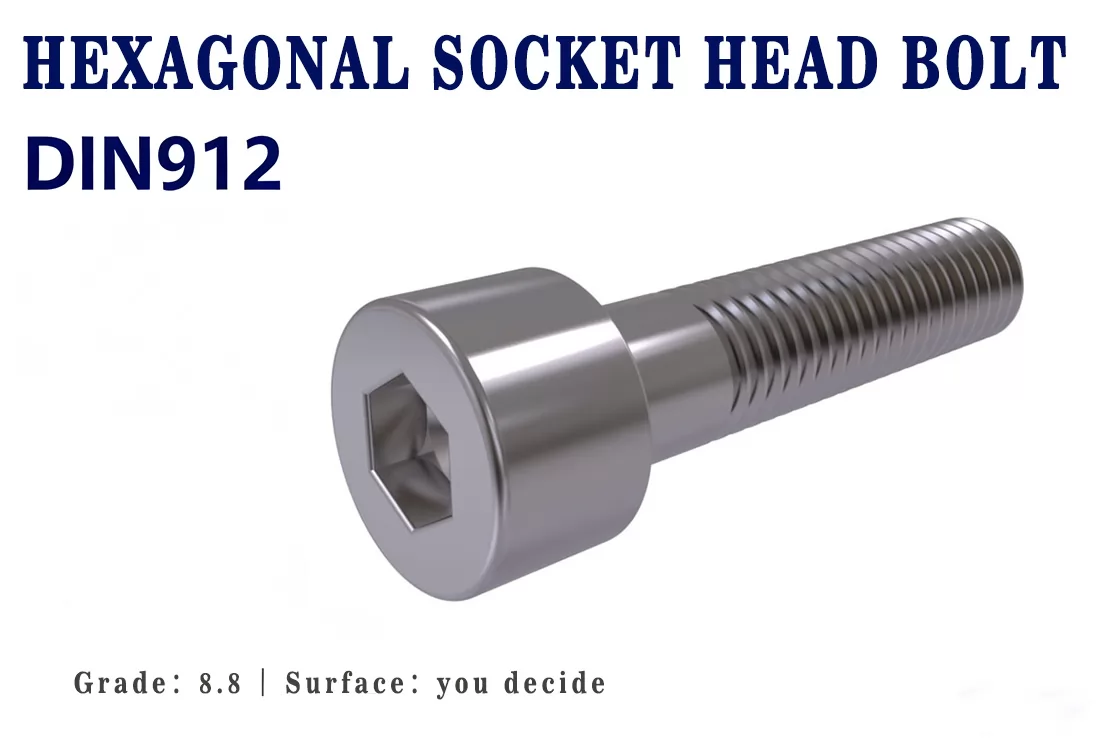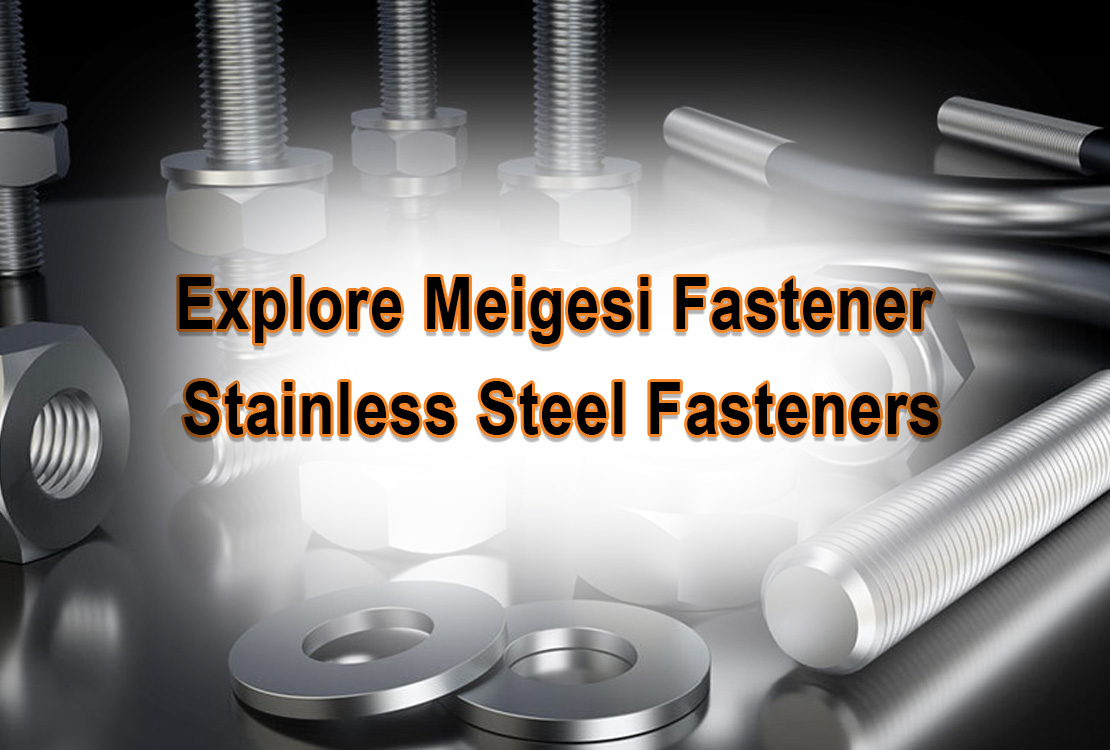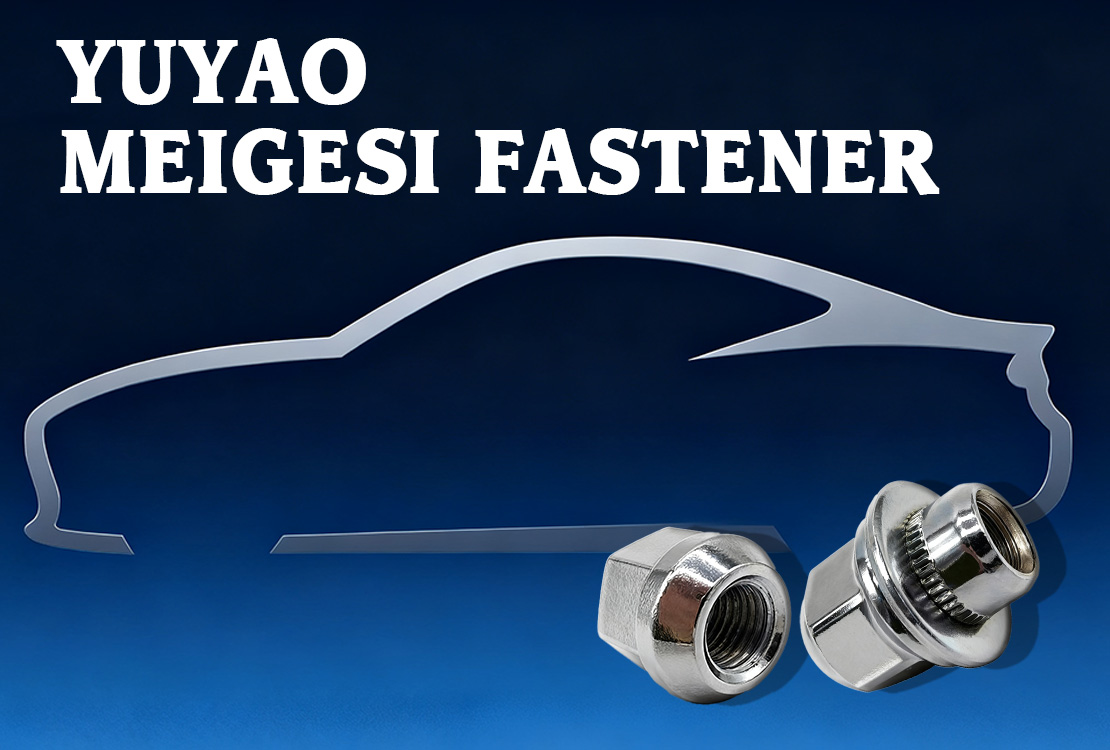

In modern industrial manufacturing, fasteners play a crucial role in ensuring product quality, durability, and safety. Among the various standards, the DIN 912 hexagonal socket bolt is recognized globally for its reliability, strength, and versatility. This guide provides an in-depth understanding of its features, materials, applications, and best practices for selection and installation.
The DIN 912 bolt is a precision-engineered fastener defined by the German Industrial Standard. It features an internal hexagonal drive hole, enabling accurate torque application and compact installation in confined spaces. Compared with traditional external hex bolts, it offers greater torque efficiency, reduced slippage, and easier maintenance.
Most DIN 912 bolts are manufactured from high-strength alloy steel (8.8, 10.9, or 12.9 grade) or stainless steel (A2, A4). Depending on the application, they may undergo zinc plating, nickel plating, or oxidation treatment to enhance surface protection against corrosion and wear.
DIN 912 bolts are widely used in industrial fields that demand high precision and strength. They can be found in:
— Mechanical equipment and industrial automation systems
— Automotive engines, chassis, and suspension systems
— Construction machinery and structural steel assemblies
— Electrical devices and electronic enclosures
— Aerospace, robotics, and precision tooling
Their compact head design makes them particularly suitable for limited installation spaces and applications that require clean, flush finishes.
DIN 912 bolts differ from standard external hex bolts in that their drive recess is inside the bolt head. This allows for the use of Allen keys or hex wrenches, making them ideal where space is tight or where aesthetic appearance matters. They also provide higher torque transmission and reduced tool wear.
The performance of a DIN 912 bolt largely depends on its material composition:
Carbon Steel: Commonly used for standard machinery, offering good strength and affordability.
Alloy Steel: Provides high tensile strength and fatigue resistance, suitable for demanding mechanical loads.
Stainless Steel (A2/A4): Offers excellent corrosion resistance, ideal for outdoor or marine environments.
Aluminum or Titanium: Used in lightweight structures or applications where non-magnetic and high-performance materials are needed.
Each DIN 912 bolt is marked with a grade indicating its tensile and yield strength:
Grade 8.8: Tensile strength 800 MPa, yield strength 640 MPa
Grade 10.9: Tensile strength 1000 MPa, yield strength 900 MPa
Grade 12.9: Tensile strength 1200 MPa, yield strength 1080 MPa
Higher-grade bolts can withstand greater loads but may require more precise torque control during installation.
Choosing the correct bolt involves evaluating the mechanical, environmental, and operational requirements of the project. Key factors include:
— Load-bearing capacity and strength grade
— Thread size and bolt length (typically M3–M30)
— Material type and corrosion protection method
— Operating environment such as temperature, humidity, or chemical exposure
Always verify that the selected bolt conforms to the design specifications and applicable standards.
DIN 912 bolts are available in a wide range of metric sizes. Common diameters include M6, M8, M10, and M12. Lengths can be customized depending on the depth of the joint or component thickness. Precision manufacturing ensures tight tolerance control and consistent thread quality.
To ensure secure and durable fastening, follow these steps:
1. Clean both bolt and nut threads to remove any dust or oil.
2. Use a properly sized hex key or socket wrench to tighten.
3. Apply the specified torque according to engineering standards.
4. Avoid both over-tightening (which can cause thread damage) and under-tightening (which may lead to loosening).
Corrosion protection depends on both the material and surface treatment:
— Black oxide: Provides mild rust resistance for indoor use.
— Zinc or nickel plating: Suitable for general outdoor applications.
— Stainless steel A2/A4: Recommended for marine or chemical environments.
— Special coatings: May be applied for enhanced performance in extreme conditions.
Frequent causes of failure include thread stripping, corrosion, fatigue cracking, and loosening under vibration. To minimize these risks:
— Use proper tightening tools and torque values.
— Apply thread-locking agents for high-vibration environments.
— Inspect regularly for signs of wear or corrosion.
— Replace damaged bolts immediately to ensure safety.
The cost of DIN 912 bolts varies depending on size, material, grade, and order volume. Carbon steel bolts are generally economical, while high-grade alloy or stainless steel bolts are more expensive due to their enhanced performance. Bulk orders often result in better pricing from suppliers.
Depending on the application, other bolts can serve as substitutes for DIN 912, including:
— DIN 933 (external hex bolts)
— DIN 7991 (flat head socket bolts)
— ISO 4762 (metric equivalent of DIN 912)
Selection should consider accessibility, mechanical load, and design aesthetics.
DIN 912: Internal hex drive, compact head, suitable for confined spaces and high-torque assembly.
DIN 933: External hex head, easier to tighten with wrenches, ideal for open installations without space constraints.
Standard carbon steel bolts may lose strength under elevated temperatures. For heat-intensive applications, use high-temperature alloy steel or stainless steel bolts designed for thermal stability. These maintain mechanical integrity even in temperatures exceeding 400°C.
To verify quality, inspect the following aspects:
— Surface smoothness and absence of rust or burrs
— Accurate thread pitch and uniform diameter
— Manufacturer’s strength and material certification
— Torque testing results compliant with DIN or ISO standards
The DIN 912 hexagonal socket bolt is an essential fastener that combines precision, strength, and versatility. From automotive engines to precision instruments, its internal hex design ensures reliability and compactness in any industrial setting. Choosing the correct grade, material, and installation method guarantees long-term performance and safety.
For more information and detailed product specifications, visit the links below:
The DIN 912 standard specifies hexagon socket head cap screws. These cylindrical head screws feature an internal hexagonal drive, making them ideal for use with a hex key or wrench. Their design provides easy fastening and disassembly, while minimizing the risk of slipping. These screws are widely used in mechanical installations and offer high tensile strength.
Hex Socket Head Cap Allen Bolt is a common fastener, also called hexagon socket bolt. They are widely used in machinery, construction and electronics. These bolts are usually made of high-strength steel or stainless steel, with excellent corrosion resistance and high strength. They are available in a variety of specifications and sizes, with common sizes ranging from M1.6 to M48, in line with international standards (such as DIN 912).













